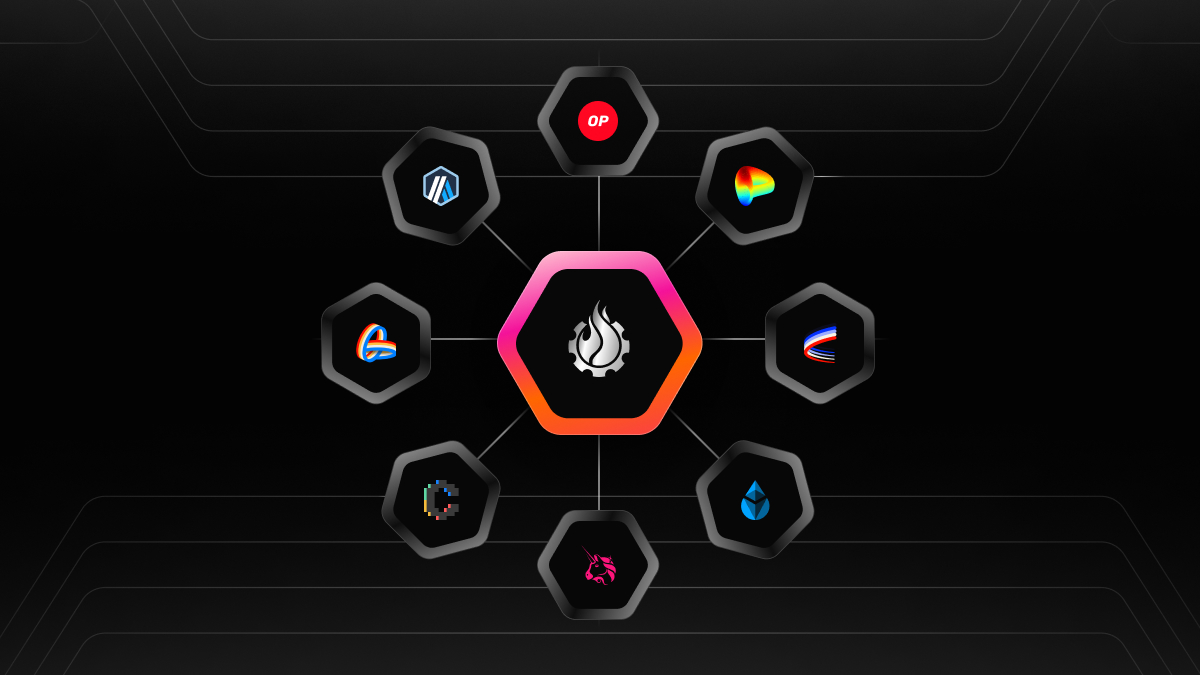- The Edge Newsletter
- Posts
- Tracking The Smart Money Using Nansen - October 21
Tracking The Smart Money Using Nansen - October 21
Spotlight: AAVE, SYRUP and OHM

The following is a writeup by inPlanB on what he’s seeing across 24HR, 7D and 30D Smart Money flows using Nansen
Disclaimer - These are merely observations and none of this should be construed as financial advice
You can get 10% off a Subscription to Nansen with our referral link: https://nsn.ai/EDGE
Thanks to our sponsors for making it possible to share this content for FREE!
| NEWSLETTER CONTINUES BELOW |
How Is Smart Money Defined?
According to Nansen, Smart Money refers to the most successful onchain traders.
But what deems a trader successful?
Smart Money Labels:
30D Smart Trader: Top-ranked wallets by PnL in past 30 days
90D Smart Trader: Top-ranked wallets by PnL in past 90 days
180D Smart Trader: Top-ranked wallets by PnL in past 180 days
Smart Fund: Crypto fund meeting Nansen’s Smart Fund criteria: Venture capital firms; Hedge funds; Liquid crypto funds; Institutional investors

Nansen’s definition of Smart Money
Disclaimer - These are merely observations and none of this should be construed as financial advice
Chains Reviewed: Ethereum, Solana, Base and BNBchain
24H Smart Money Flows

7D Smart Money Flows

30D Smart Money Flows

This Week’s Spotlight: AAVE, SYRUP and OHM
Over the past week, we’ve noticed that smart money wallets have been quite cautious, meaning no significant buying activity. The most compelling finding: smart money wallets poured nearly $10M into AAVE over the past week, with institutional players maintaining 70% position retention despite double-digit price declines.
The following analysis examines three tokens showing consistent positive smart money flows across 24H, 7D, and 30D timeframes, backed by onchain evidence that reveals not just what's being bought, but who's buying (and possibly why).
1. Aave ($AAVE, Ethereum): Institutional Capital Positions Ahead of V4
As you know, Aave operates as the largest lending protocol in DeFi, enabling users to supply crypto assets as collateral and borrow against them with algorithmically determined interest rates. The protocol pioneered flash loans and has maintained consistent dominance in the lending sector, with over $40 billion in total value locked. Unlike overcollateralized retail lending platforms, Aave has evolved into a multichain credit infrastructure serving both retail users and increasingly sophisticated institutional participants.
The platform's upcoming V4 upgrade, slated for Q4 2025 release, represents a fundamental architecture shift introducing modular lending markets through a hub-and-spoke design. This allows custom risk parameters and interest rate curves per market without fragmenting liquidity across isolated pools. The upgrade includes a Reinvestment Module that deploys idle pool liquidity into yield-generating strategies, potentially boosting returns for liquidity providers by up to 30% according to protocol estimates.
The Smart Money Story
Smart money accumulation in AAVE demonstrates a pattern of conviction-based buying that intensified dramatically over the past 30D. Onchain data shows 3 distinct smart money wallets accumulated $9.7 million in net inflows over the 7D period, representing approximately 0.28% of the token's total market cap flowing from sophisticated addresses alone in just one week.
Analysis of the top 50 PnL leaders over the past 7D shows that 25 addresses bought AAVE, with many still holding more than 70% of their positions. The 30D view confirms this wasn’t panic buying but a deliberate, sustained accumulation. Smart money began accumulating approximately 4 weeks ago, as we highlighted in our October 7th Smart Money report:

The broader holder landscape reinforces the accumulation thesis. While smart money added $9.7 million, whale wallets contributed $5.5 million in net inflows over 7D. Fresh wallets brought $1.2 million in new capital, suggesting the smart money move is attracting follow-on retail interest.

Token Price (grey), Smart Money Balance (yellow)
Market Data:
Price: $228.57 | Market Cap: $3.48B | FDV: $3.48B | 24H Volume: $340M
Smart Money Data Callout:
Smart Money: 3 wallets, $9.7M 7D net flow, average position $3.2M, 68.5% average retention
Whales: $5.5M 7D net inflow, accumulation phase
Fresh Wallets: $1.2M 7D net flow
Exchange Flow: $5.3M 7D net inflow (mixed signal - weak hands exiting)
Top Holder: 0x84e755 with 20.4k tokens ($4.7M), institutional smart money
Why This Matters
The accumulation pattern in AAVE suggests smart money may be positioning ahead of the V4 upgrade and its transformative impact on DeFi lending infrastructure. The modular lending markets fundamentally change how institutional participants access crypto credit, allowing customized risk parameters without sacrificing liquidity efficiency. The Reinvestment Module tackles a major capital efficiency issue in DeFi lending, where billions in idle liquidity currently earn no yield. It’s possible that smart money is front-running the V4 launch.
The timing of accumulation proves particularly revealing. Smart money began buying as Bitcoin traded above $110K, suggesting this wasn't capitulation buying but strategic positioning during strength. The wallets maintained positions through the recent volatility when AAVE briefly touched $212, demonstrating conviction rather than trading mentality.
2. Maple Finance ($SYRUP, Ethereum): Institutional Lending Renaissance Draws Quiet Capital
Just a quick recap, Maple Finance operates as a hybrid DeFi protocol, bridging institutional crypto lending with traditional finance compliance standards. The protocol underwent a significant token migration in early 2025, converting MPL to SYRUP at a 1:100 ratio. This rebranding accompanied a strategic shift toward institutional focus and the launch of Syrup.fi, a permissionless DeFi protocol democratizing access to institutional-grade yield. The platform has achieved remarkable growth, with TVL surging from $250M at year-start to over $4B currently - an impressive expansion (you can track it here).
Sid the founder joined the Edge Podcast recently right here (lots of alpha in this one):
The Smart Money Story
Smart money's interest in SYRUP presents a more subtle but sustained accumulation narrative. Over the past 7D, 2 distinct smart money wallets accumulated $273,400 in net inflows, representing approximately 0.07% of market capitalization. While this appears smaller in absolute terms compared to AAVE, the ratio of smart money flow to market cap sits at a comparable level when adjusted for token size.
The PnL leaderboard reveals telling patterns about holder conviction. The top accumulator, address 0x90ff26, controls 577,700 tokens valued at $208K while maintaining 67.7% of their peak holdings. This wallet achieved 132% total ROI, but notably did not sell at peak. This holding pattern suggests the wallet views current levels as still attractive, despite already achieving triple-digit returns.
The top 25 PnL leaders shows split behavior: approximately 40% fully exited positions after achieving strong returns, while 60% maintained significant holdings above 50% retention. This mixed behavior actually strengthens the bullish case, as it demonstrates that SYRUP attracted both traders who captured profits and longer-term holders who believe in further upside.
The 30D accumulation story intensified recently. Smart money added $273,400 over 7D, but tracking backwards shows this accelerated from earlier accumulation patterns.
Fresh wallet activity contributed $1.4 million over 7D with a 5.4x multiplier above average.
Exchange flows show $3.7 million in net outflows over 7D, which is a bullish signal.

Token Price (grey), Smart Money Balance (yellow)
Market Data:
Price: $0.36 | Market Cap: $402M | FDV: $402M | 24H Volume: $26.2M
Smart Money Data Callout:
Smart Money: 2 wallets, $273.4K 7D net flow, average position $137K, 67.7% average retention
Top PnL Traders: -$1.8M 7D net flow, profit-taking phase
Whales: -$194.9K 7D net outflow, mixed signals
Fresh Wallets: $1.4M 7D net flow (5.4x above average)
Exchange Flow: -$3.7M 7D net withdrawal (bullish)
Top Holder: 0x90ff26 with 577.7k tokens ($208K), 132% total ROI
Why This Matters
The accumulation pattern in SYRUP suggests smart money recognizes Maple's unique positioning in institutional DeFi as regulatory clarity increases. The platform's hybrid model combining blockchain transparency with TradFi compliance directly addresses the primary barrier preventing institutional capital from entering DeFi lending markets. With TVL growing nearly 10x in 2024 and gaining traction through 2025, the protocol demonstrates strong PMF.
The negative 7D whale flows of $194,900, even with smart money accumulation, suggests larger holders are distributing. While smart money adds capital, the concurrent reduction from whales creates a tug-of-war dynamic that could limit near-term upside. Additionally, the protocol faces increasing competition from Centrifuge (you might want to keep an eye on $CFG) and traditional finance players exploring tokenized credit, potentially pressuring margins and growth rates.
My take: I expect some pullback on SYRUP due to the ongoing DRIP distribution, which has added about $600K in sell pressure to the market. It’s a relatively small amount and could present a good buying opportunity.
3. OlympusDAO ($OHM, Ethereum): Reserve Currency Narrative Draws Concentrated Conviction
Olympus operates as a decentralized reserve currency protocol that pioneered Protocol Owned Liquidity in DeFi. Unlike algorithmic stablecoins attempting to peg to USD, OHM maintains a treasury-backed floor price while allowing market dynamics to determine the ceiling. Each token is backed by assets including DAI, FRAX, LUSD, ETH, and liquidity pool tokens held in the Olympus treasury. The protocol's Cooler Loans feature enables borrowing up to 95% of OHM's liquid backing at 0.5% interest with no price-based liquidations, creating a unique lending primitive in DeFi.
The Smart Money Story
Smart money accumulation in OHM tells a story of concentrated, high-conviction positioning by a single sophisticated wallet. Over the past 7D, 1 smart money wallet accumulated $348k in net inflows, representing approximately 0.09% of market capitalization. While this appears small in absolute terms, the single-wallet nature of the accumulation actually strengthens the signal, as it demonstrates one sophisticated player committed substantial capital rather than diffuse interest from many small buyers.
Top PnL traders showed $130k in net outflows over 7D, suggesting short-term traders took profits while the single smart money wallet accumulated. Whale wallets remained neutral with $0 net flow. Exchange flows show $1.3 million in net outflows over 7D with a 1.6x multiplier above average, meaning tokens steadily moved from exchanges to self-custody.
Fresh wallet activity contributed $53K with a 1.1x multiplier, showing modest but consistent new capital entering. The combination of smart money accumulation, neutral whale behavior, strong exchange outflows, and positive fresh wallet activity creates a technically bullish setup even as short-term traders rotate out of positions.

Token Price (grey), Smart Money Balance (yellow)
Market Data:
Price: $22.99 | Market Cap: $377M | FDV: $377M | 24H Volume: $260K
Smart Money Data Callout:
Smart Money: 1 wallet, $348.1K 7D net flow, concentrated conviction
Top PnL Traders: -$130.7K 7D net flow, profit-taking
Whales: $0 7D net flow, neutral positioning
Fresh Wallets: $53.1K 7D net flow (1.1x above average)
Exchange Flow: -$1.3M 7D net withdrawal (bullish)
Why This Matters
As a treasury-backed reserve currency with Protocol Owned Liquidity, OHM addresses fundamental liquidity challenges that plague many DeFi protocols. The Cooler Loans primitive enables capital-efficient borrowing against OHM without liquidation risk, creating utility beyond simple speculation. However, I’m not aware of any major catalysts at the moment, so further research is recommended.
The single-wallet accumulation pattern, while concentrated, actually provides clarity about conviction level. This wallet committed over $348k in a 7D period to accumulate OHM, suggesting either significant alpha on an upcoming catalyst or fundamental belief in the reserve currency thesis.
Synthesis: The DeFi Infrastructure Thesis
Examining patterns across these 3 tokens reveals a clear meta-trend emerging in smart money positioning. All 3 represent infrastructure plays rather than application-layer protocols. AAVE provides lending infrastructure, SYRUP enables institutional credit infrastructure, and OHM pioneers reserve currency infrastructure. This suggests some smart wallets are positioning in the infrastructure players, which we also have observed in the last week Smart Money report with SNX, RAIL and MPLX.
As always, onchain data shows what's happening, not why. Each of these projects deserves deeper research into their fundamentals, tokenomics, buybacks, token unlock schedules, and development roadmaps before making allocation decisions. The presence of smart money accumulation provides a valuable signal but should never substitute for comprehensive due diligence on project viability, team execution capability, and competitive positioning.
This analysis through Nansen presents onchain data for informational purposes and is not financial advice. Always conduct thorough research before making investment decisions.
All of the Smart Money information in this article can be obtained via Nansen’s “Pioneer Plan” - If you’d like to use this yourself you can get 10% off a Subscription with our referral link: https://nsn.ai/EDGE









Reply